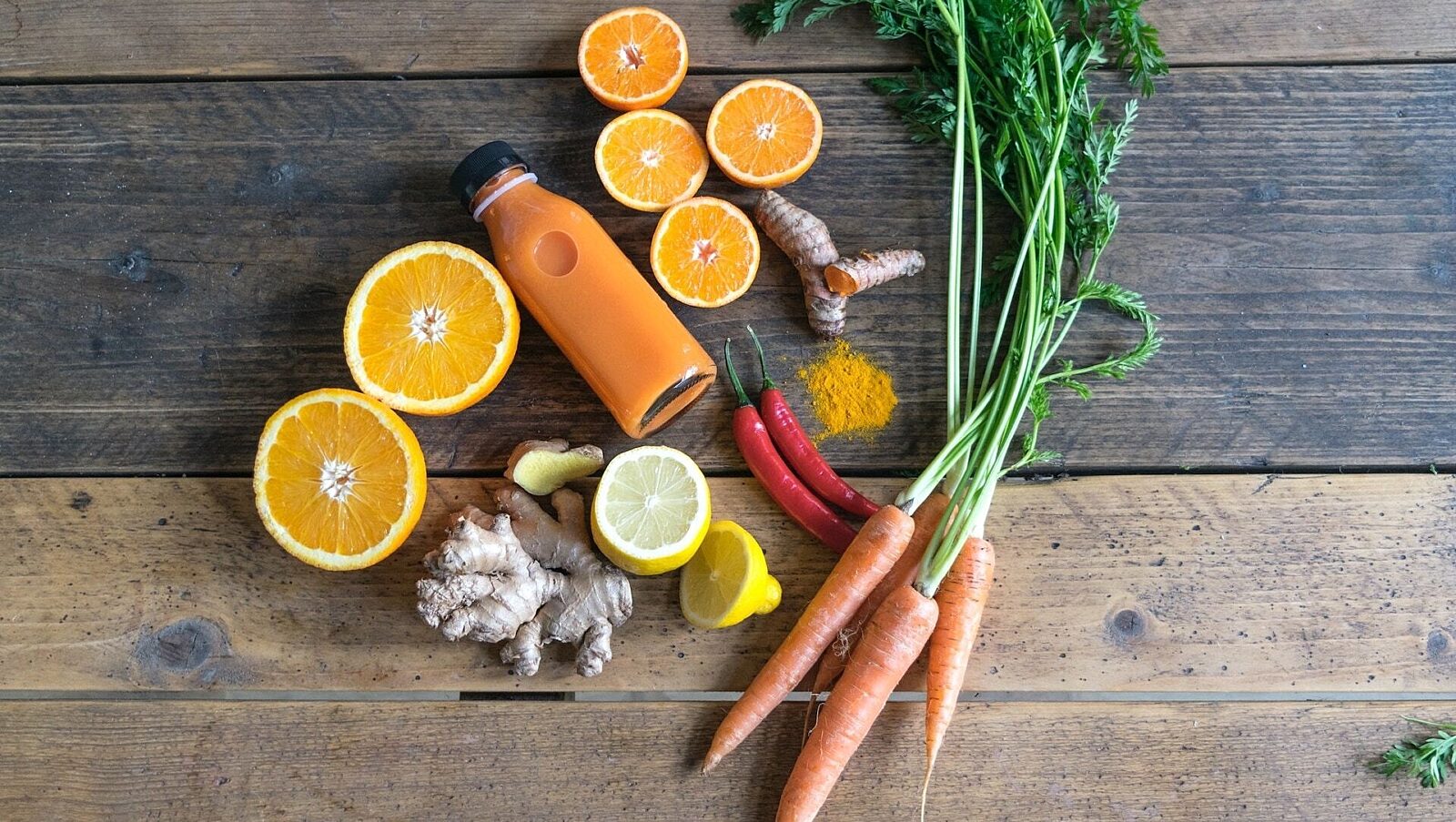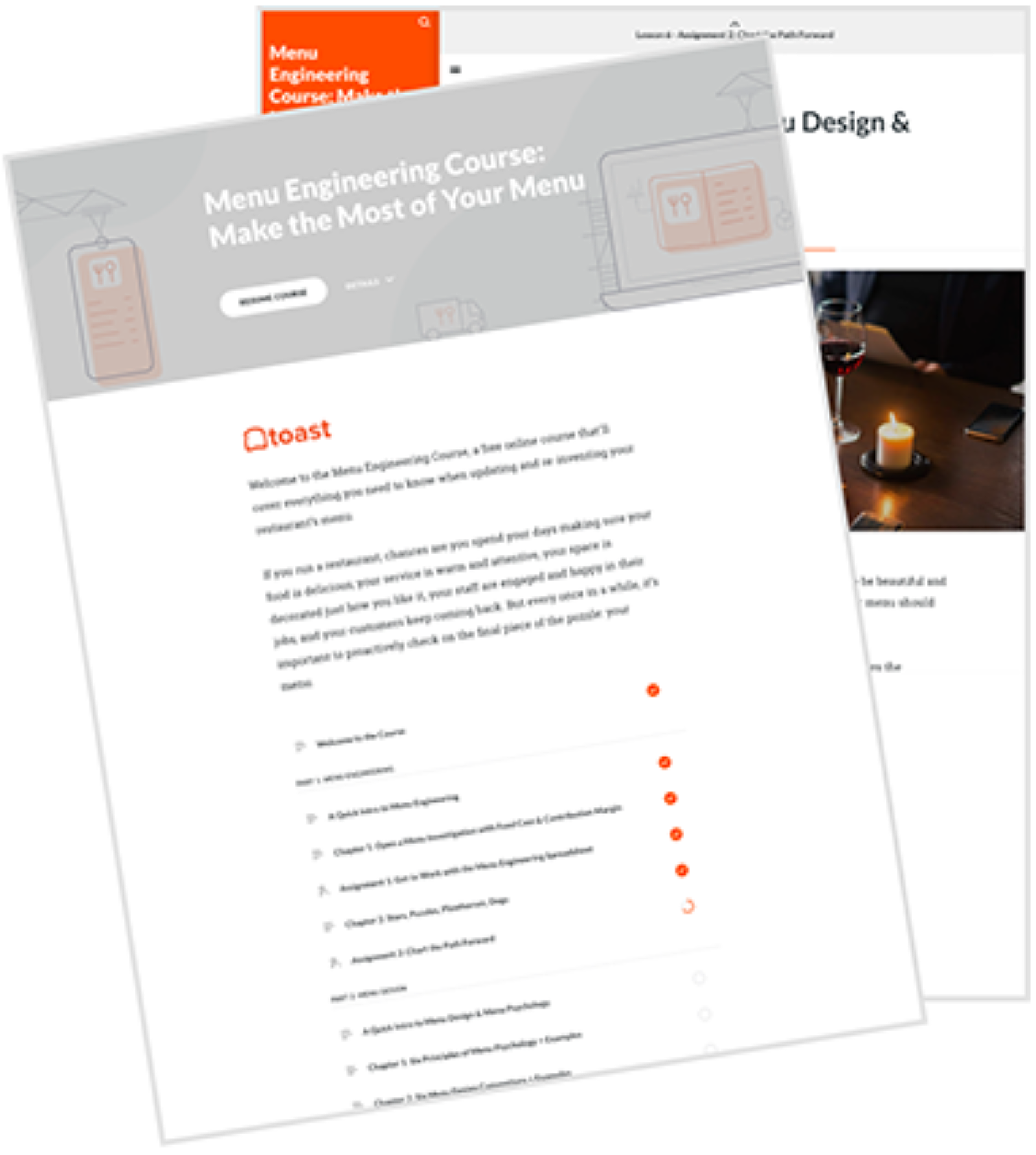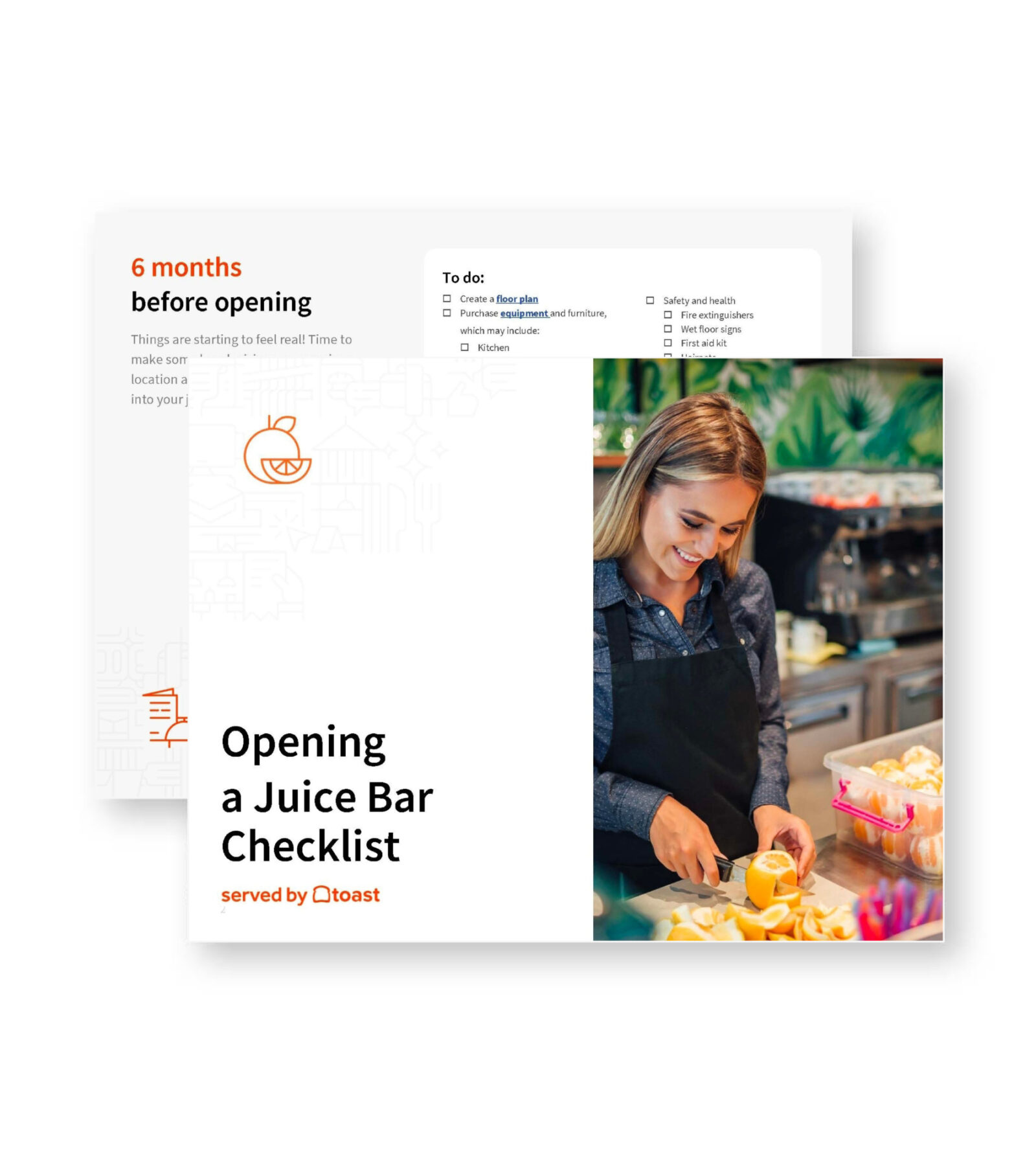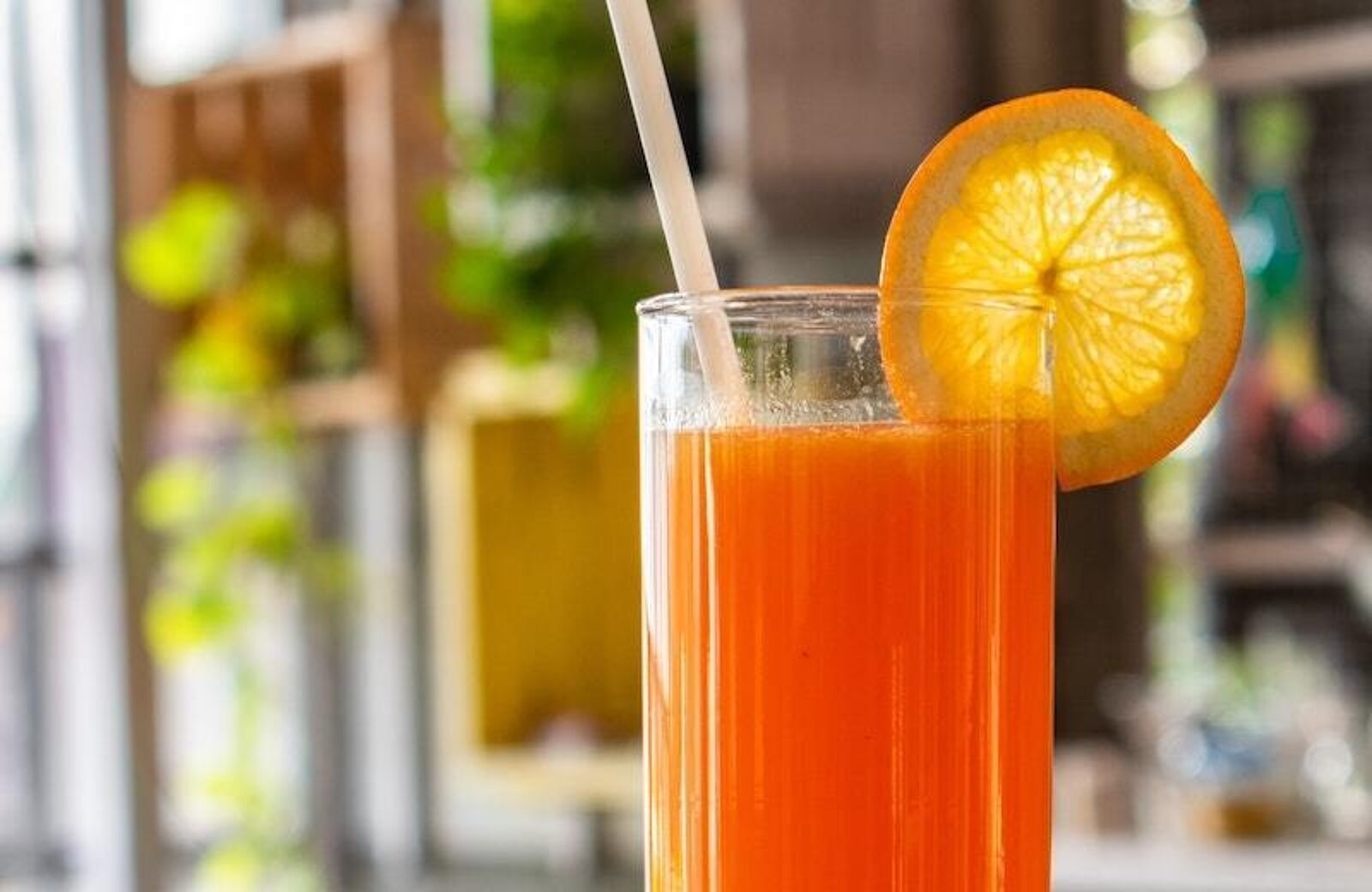
How to Make a Juice Bar Menu Design With Examples (Free Template)
Everything you need to know to develop, engineer, and design your perfect juice bar menu.

Maddie RocklinAuthor


Menu Engineering Course
Take this course to make the most of your menu. Learn about menu psychology and design, managing your menu online, and adapting your menu to increase sales.
Get free downloadHow do I create a juice bar menu layout?
Designing menus and graphics in-house is a great way to save, but hiring a designer streamlines the process. If you decide to do do-it-yourself, use design software like Adobe Creative Suite, Canva, or Powerpoint to create designs with a professional finish.
Whether doing it yourself or working with a designer, keep these design best practices in mind. Our juice bar menu templates can help you to get started.
How to Create a Juice Bar Menu
So you’re ready to open a juice bar, with fresh fruits and vegetables lining the shelves, just waiting to be squeezed into delicious, refreshing beverages for your customers to enjoy. Neatly packaged bottles sit ready to be picked out of your refrigerator, and you can already picture the line stretching out the door and around the corner on a hot summer day. But first, there’s one important step you’ll need to take: designing the perfect menu for your new juice shop.
Juice Bar Menu Design Best Practices
There are many components to factor in when it comes to creating your menu – your colors, design, composition, layout, item prices, descriptions, and more. Whether you’re prioritizing printed or online versions, your menu is an opportunity to not only share your products but also communicate your juice bar’s unique brand identity to your customers, influence consumer behavior, and maximize revenue for your business.
The following 10 steps, along with these menu design best practices, are great places to start to help guide you through your design process – and ensure you’re squeezing the most out of your juice bar menu!
Juice Bar Menu Templates
Use these juice bar menu templates as a starting point for your menu design or to give your menu a refresh.

How to Make a Juice Bar Menu
1. Write out all menu items
First, take note of all your menu items. Listing out all of the components you’re planning to include on your menu will lay the necessary foundation for your next 9 steps – like calculating your menu prices, drafting your menu descriptions, determining your menu layout and spacing, and more.
Pull up an Excel sheet, or grab a pen and paper, and write down all of the items that you’re planning to sell to your customers – from juices and smoothies, to acai bowls and snacks. As you go through this process, it’ll also be helpful to think about opportunities to increase your juice bar’s profit. Beyond your main menu items, are there any add-ons or substitutions you could include as an upcharge? Will customers be able to pay extra for protein powder added to smoothies or extra toppings on their smoothie bowls? Anything that can be purchased should go on this list.
2. Categorize menu items
Next, think about how you want to organize these items on your menu. Will you sort them by product type or wellness benefits, or both? Will you have one section for all of your add-on options, or include them within different sections? What categories will be most intuitive to your customers, and make it as easy as possible for them to find the items they’re looking for?
As you create your categories, think about how many items you’re including in each, how big each section will be, and how much space they’ll take up on your menu. If your sections are feeling uneven, think about whether there’s a way to reorganize your items to help your menu flow a bit better.
There are also resources available to help you figure out what categorization will work best for you and your juice shop, like this menu engineering worksheet and these juice bar menu templates.
3. Set menu prices
Who is your target market? What price points will be accessible and sustainable for the population you’re trying to reach, while still allowing you to hit your revenue goals?
Who is your competition? What other juice bars are open in your area, and how much do they charge for similar products? How will you ensure your prices are competitive? If you’re charging more, how will you justify your costs?
What expenses are you on the hook for? How big can you expect your profit margin to be, after you account for overhead and inventory, compensation and benefits, rent, maintenance, and any other costs?
Where are your products coming from? Are your juices squeezed from organic, locally grown fruits and veggies, and are you factoring their quality into your menu item prices?
The prices you set for your menu items shouldn’t be arbitrary, and having answers to all of these questions, and more, will be critical to helping you determine how much you can and should charge for your juice bar products. Resources like this menu engineering course and this menu pricing strategy guide are also helpful tools for this step of your menu design process.
4. Create menu descriptions
Once you know what items you’re selling and how much you’re charging for them, you’ll need to think about how you’re going to communicate what you’re selling to your customers.
Will you give your juices and smoothies witty names or stick with a more serious tone? Will a humorous, narrative line explain what’s in each smoothie bowl to your customers, or will you simply list out the ingredients? What approach most aligns with the overall vibe of your juice bar, to help your brand feel consistent and reliable to your customers?
Whatever tone you take, your menu descriptions should include everything customers might need to know before placing an order, so it’ll be important to also think about how you’ll note information like potential allergies, dietary restrictions, and nutrition facts.
Pro tip: this is a step where it’s totally okay to bring in some outside support – copywriters are a great resource if you’re looking to hire someone to delegate this task.
5. Decide on a menu color scheme
Moving on from the written to the visual components of your menu design, it’s time to choose your color scheme. Your colors are a key part of how you communicate your juice bar’s identity, and they should be consistent across your brand and marketing materials. If you already have a brand kit, feel free to pull your menu color scheme from there. If you’re still nailing down the best colors to represent your business, here are some resources to explore for some color inspo:
Pro tip: it usually costs more to print in color than in black and white, and different printers will offer different services at different price points – this is a good step to do a little research and make sure your budget can cover the printing costs of whatever colors you land on.
6. Design your juice bar menu
When it comes to creating the actual design of your menu, you should feel free to enlist the help of a design expert. Many businesses will hire a graphic designer to support at this stage, if budget allows. If you’d rather not delegate the work, however, there are also plenty of resources available to help you come up with your design on your own. Check out Canva, Adobe Suite, and/or menu design templates like these. Pinterest, Instagram, TikTok, and other social media sites are also great places to look for design inspo, and tools like our menu engineering course’s section on menu design and these menu design best practices serve as excellent resources.
Here are some additional thoughts to consider as you work on your design:
How are you utilizing space? Are you able to convey all the necessary information about your menu items without overcrowding your pages?
Does your menu feel busy and chaotic, or is it spaced out enough so as not to be overwhelming for your customers?
How does your design help your menu’s flow? Does it feel intuitive for your readers? Is it aesthetically pleasing?
7. Juice Bar Menu Photos
It’s also often beneficial to add visual components to your menu design. Photos and illustrations depicting your menu items can increase customer engagement and enhance your menu’s overall aesthetic. Social media is also a great tool to leverage to share these assets and put your products on display to a wider audience (and you can even include a QR code to your juice bar’s social media accounts on your menu).
If you do opt for photos on your menu, one thing to consider is the quality of your shots. Going with no photos is actually much better than going with bad photos, so choose carefully – no blurry or unappealing options that might put off potential customers. Any image should be high-quality, professionally shot, and truly worthy of a front and center menu placement.
The Ultimate Guide to Restaurant Branding
Use this guide to get tips on how to create a restaurant brand that stands out, attracts customers, and drives repeat visits.

8. Choose Menu Fonts, Spacing, and Composition
Images aren’t the only visual components to consider in your menu design. Deciding what your text will look like, how it will be spaced out on your menu, and how your fonts, colors, and other visual components will interact and show up together on the page are all essential steps in this process.
Here are some thoughts to consider at this stage of your design:
What kind(s) of font(s) you want to use for all of the text on your menu, including headers, menu items, descriptions, and prices;
Whether you’ll use the same font throughout, or differentiate sections with different types of text;
If the different fonts for different sections will be similar and complementary, or totally different to juxtapose contrasting vibes for artistic flare;
How you’ll space out each section, as well as the items within each section;
How crowded your menu feels, between text and images, and the role that your spacing can play in helping your menu flow;
Don’t be afraid to come up with several versions, try out different combinations, compare your options, and test them out on prospective customers to get a sense of what works best for your business.
9. Select the final menu layout
Gather all of those options – and then start gathering feedback. Reach out to friends and family, your juice bar staff and key stakeholders, and get their buy-in on your menu design. While it might be your juice bar, fresh sets of eyes and outside perspectives from trusted sources are an invaluable resource, especially at this stage, while there’s still time to make any edits or changes before your menus are printed. Incorporate any feedback that resonates, and then choose your final menu design!
10. Proofread and print your menu
All that’s left to do is a good, deep copy edit – and then it’s off to the printers. Take your time going through your menu (and maybe even enlisting some of those trusted sources again) to give it a very close read and catch any potential grammar or spelling errors, typos or other preventable mistakes. Once you feel like it’s in good shape, choose a printing service (you can start by exploring places like Staples, Vistaprint, PsPrint, or PrintPlace) and get your menu design onto the page.
And voilà! One fresh squeezed juice bar menu. You did it!
Examples of Juice Bar Menus:
With high-quality photos of their juice bottles, clearly organized menu items, fun item names and detailed descriptions, along with listed out product benefits, Juice Crafters’ menu makes it easy for their customers to engage with their menu, find exactly what they want, and place their order. 10/10!
Kreation’s signature green and black color scheme is consistent everywhere from their logo to their website to the color of the font on their menu, making their brand feel cohesive, consistent, and reliable. Combined with well-organized item categories, sections clearly labeled, and ingredients and dietary restrictions denoted, Kreation checks all of our menu design boxes!
NatureWell’s minimalist approach to their menu design is concise and clear. Keeping the font type consistent throughout while utilizing different sizes for their menu item titles and their descriptions makes their menu feel clean, crisp, and easy to navigate. A+
Earthbar is one of, if not the most, iconic juice bars in Los Angeles – and their menu might be just as invigorating to browse as their juices and tonics are to consume. My personal favorite component is the ability to filter their products, not by traditional labels like cost, ingredients, or product type, but by labels like energy, digestion, focus, anti-aging, weight loss, immunity, stress, sleep, detox, strength, beauty, and essentials. A perfect example of putting the emphasis on product outcome as a way to influence customer behavior.
Similar to NatureWell, Beverly Hills Juice keeps their menu simple, concise, and to the point. Rather than organizing their offerings by product type, however, they sort by ingredients – including categories like coconut, fruit, ginger, and vegetable – illustrating both the power of a minimalist approach and the diversity of sorting options.
Pressed Juicery does an amazing job of incorporating visuals into their menu design, including high-quality photos of their products to entice potential customers with mouthwatering images of juices, smoothies, wellness shots and tonics, smoothie bowls, freezes, snacks, and more.
By taking a predominantly visual approach to their menu – including nothing but images of their different colored juice bottles upon first scroll, and no text – The Juice relies on their beautiful rainbow of options to draw customers in and drive engagement with their site. Potential customers must click on each drink for more information and, once navigated to, these pages offer not only the ingredients, but also a cheeky description of what it will taste like and what benefits it offers.
The menu at Nekter Juice Bar does it all – aesthetically pleasing coastal color scheme, clearly defined product sections, well-labeled headers, high-quality photos of each item, product benefits listed out, detailed descriptions, and nutrition information included. Cheers to that!
Qwench Juice’s menu is clear and easy to navigate, with multiple tiers of organization that are intuitive for customers and conducive to product purchasing. Smoothies are organized by vintage, epic, green, and protein, juices are sorted into raw juices and shots, bowls are divided by acai bowls and yogurt bowls, and food is comprised of grain bowls and salads – making it simple and straightforward for their guests to find and buy what they want.
The product categories at Earthly Juices include the usual options, like juices, detoxes, wellness shots, and superfoods, but they also offer a COVID-19 Support section, sharing products such as immunity boosts and bone broth to ward off and treat any illness. Combined with well-shot images of their products and a clear, easy-to-navigate menu, it’s no wonder this juice bar is a hit!
Related Menu Ideas
- How to Make a Deli Menu
- How to Make a Dessert Menu
- How to Make a BBQ Menu
- How to Make a Breakfast Menu
- How to Make a Pizzeria Menu
- How to Make a Takeout Menu
- How to Make a Brewery Menu
- How to Make a Wine Bar Menu
- How to Make a Bar Menu
- How to Make a Coffee Shop Menu
- How to Make a Food Truck Menu
- How to Make a Diner Menu
- How to Make a Bakery Menu
- How to Make a Drink Menu
- How to Make a Cocktail Menu
- How to Make a Catering Menu
- How to Make an Ice Cream Shop Menu
- How to Make a Fine Dining Menu
Is this article helpful?
DISCLAIMER: This information is provided for general informational purposes only, and publication does not constitute an endorsement. Toast does not warrant the accuracy or completeness of any information, text, graphics, links, or other items contained within this content. Toast does not guarantee you will achieve any specific results if you follow any advice herein. It may be advisable for you to consult with a professional such as a lawyer, accountant, or business advisor for advice specific to your situation.
Read More
Subscribe to On the Line
Sign up to get industry intel, advice, tools, and honest takes from real people tackling their restaurants’ greatest challenges.



